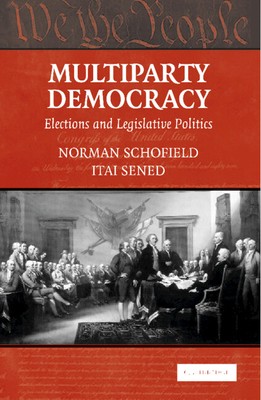
- We will send in 10–14 business days.
- Author: Norman Schofield
- Publisher: Cambridge University Press
- ISBN-10: 0521450357
- ISBN-13: 9780521450355
- Format: 15.5 x 23.4 x 2 cm, kieti viršeliai
- Language: English
- SAVE -10% with code: EXTRA
Reviews
Description
This book adapts a formal model of elections and legislative politics to study party politics in Israel, Italy, the Netherlands, Britain, and the United States. The approach uses the idea of valence, that is, the party leader's non-policy electoral popularity, and employs survey data to model these elections. The analysis explains why small parties in Israel and Italy keep to the electoral periphery. In the Netherlands, Britain, and the US, the electoral model is extended to include the behavior of activists. In the case of Britain, it is shown that there will be contests between activists for the two main parties over who controls policy. For the recent 2005 election, it is argued that the losses of the Labour party were due to Blair's falling valence. For the US, the model gives an account of the rotation of the locations of the two major parties over the last century.
EXTRA 10 % discount with code: EXTRA
The promotion ends in 21d.09:05:27
The discount code is valid when purchasing from 10 €. Discounts do not stack.
- Author: Norman Schofield
- Publisher: Cambridge University Press
- ISBN-10: 0521450357
- ISBN-13: 9780521450355
- Format: 15.5 x 23.4 x 2 cm, kieti viršeliai
- Language: English English
This book adapts a formal model of elections and legislative politics to study party politics in Israel, Italy, the Netherlands, Britain, and the United States. The approach uses the idea of valence, that is, the party leader's non-policy electoral popularity, and employs survey data to model these elections. The analysis explains why small parties in Israel and Italy keep to the electoral periphery. In the Netherlands, Britain, and the US, the electoral model is extended to include the behavior of activists. In the case of Britain, it is shown that there will be contests between activists for the two main parties over who controls policy. For the recent 2005 election, it is argued that the losses of the Labour party were due to Blair's falling valence. For the US, the model gives an account of the rotation of the locations of the two major parties over the last century.


Reviews